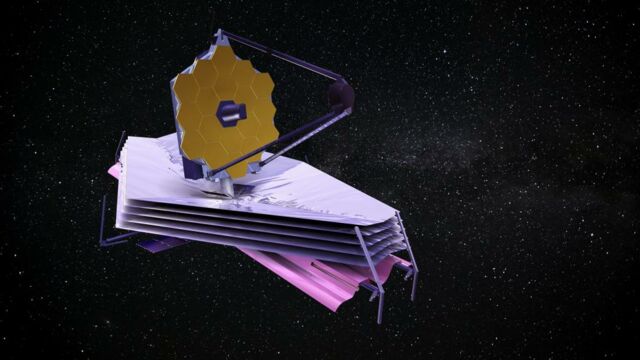NASA finally reveals damage done to James Webb Telescope after being hit by meteoroids

The James Webb Space Telescope was hit by meteoroids back in May, but NASA has just revealed the photos showing the damage and it is worse than predicted.
NASA launched the James Webb Space Telescope (JWST) on December 25, 2021. The telescope sent in its first pictures on Tuesday, July 12.
Discover our latest podcast
NASA released a report where it explains the damage the JWST suffered when it was hit by meteoroids.
The meteoroids strikes
NASA revealed that its space telescope was struck by 19 micrometeoroids according to Live Science. Indeed these micrometeoroids, which are believed to have hit the JWST between May 23 and May 25, had caused very little damage to the telescope.
More under this adMore under this adSky News reported that the telescope suffered 6 deformations which are insignificant and can be fixed by ‘adjusting the maths that NASA applies to the data that each panel collects’.
However, out of those 19 hits, one of them did cause significant damage. Space.com explains that one of the telescope’s 18 hexagonal golden mirrors was damaged.
More under this adMore under this adJames Webb Space Telescope picture shows noticeable damage from micrometeoroid strike https://t.co/mGLg1HFxsppic.twitter.com/PdtUOrqTt8
— SPACE.com (@SPACEdotcom) July 18, 2022
Thankfully, despite the damage, the overall use of the telescope isn’t affected, but simply reduces the accuracy of the data collected.
More under this adMore under this adA one-off strike?
It was inevitable that the JWST would come into contact with micrometeoroids. However, NASA is trying to figure out if this strike is a one-off event or if it could become a common occurrence.
NASA wrote in their document:
It is not yet clear whether the May 2022 hit to segment C3 was a rare event.More under this adMore under this ad
There is a chance that this strike is ‘an unlucky early strike by a high kinetic energy micrometeoroid that statistically might occur only once in several years’ according to NASA.
Read more:
⋙ NASA’s Mars rover found a mysterious ‘noodle’ object